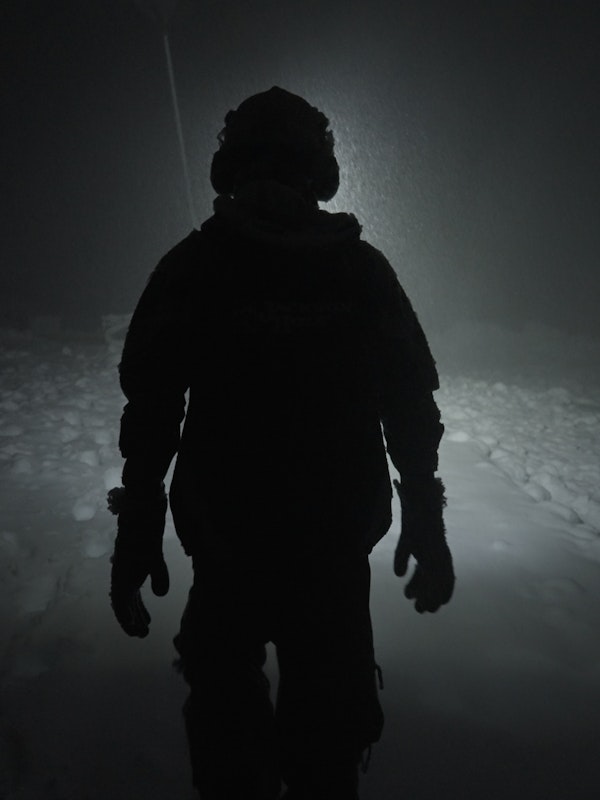Tree line in the mountains is a magical place. Towering above the valley floor, the rarefied air is home to some of the oldest inhabitants in the American West, namely whitebark pine trees. Naturally, we think about these conifers, hearty denizens of the inhospitable, windswept landscapes, snow cradling statues that backdrop our powder dreams, light fluffy silhouettes that quiet the experience, and give us pause to the true nature of the alpine kingdom.
Yet, with ever-dwindling numbers, the whitebark pine is a threatened species throughout the American West, susceptible to anthropogenic climate change, blister rust, and pine beetles, which are native. And, at the same time, efforts continue to keep these vital trees a part of the interconnected bond of our mountain ecology.
The Northern Rockies Conservation Cooperative is a non-profit that supports researchers and conservationists, and one of their main energy centers is a long-time Jackson local named Nancy Bockino, a steadfast scientist who for the last two and a half decades has been working throughout the Teton Range and beyond to maintain the well-being of one of the longest living locals in the alpine.

Originally from northern Idaho, Bockino went to school for wildlife biology and natural resource management for her undergrad, then went to grad school where she got twin Master’s Degrees in Forest Ecology and Botany. “When I moved to the Tetons in 2000,” says Bockino, “I took a position as a seasonal botanist. A woman in the Forest Service told me of a conservation program for whitebark pine that’s starting. ‘There’s some funding and no one to do the work.’ In the Forest Service they don’t have people to doing whitebark work, they do it on the side.” So, she began doing it on weekends. “I started helping pick the plus trees and learning about this whole thing. It evolved from there,” she says.
Why should we care about whitebarks, you might ask? Well, there are lots of reasons. One reason is simple, scientific and cool. “They shelter our water supply,” says Bockino. “It’s probably their most important ecological function.” Everyone usually thinks about grizzly bears eating their seeds for pre-hibernation food sources, but the snow collects under them because it’s kind of like a wind fence, and then they shade it in the spring, so they’re crucial to the watershed, helping the water last longer all summer.
According to the National Park Service, once whitebark pine seedlings get established, they improve and enhance harsh site conditions by facilitating the establishment of a diverse suite of subalpine plant and animal species. As a ‘keystone’ tree, stands of white bark pine serve important functional roles. They regulate snowmelt by shading and retaining snowpack, which also slows erosion by anchoring soils in place.
“Keystone in this context,” says Bockino, “means they have a disproportionately large impact relative to their population. And for that they are a ‘Foundation Species’, having impact on everything below them.”
Bockino has a transcendent side to her whitebark enthusiasm as well. “These beings just stand there and take care of us. That’s the greatest thing. They take carbon dioxide out of the atmosphere and make oxygen and they stand in the same place for a very long time. Some of the oldest white bark pines are 1000 years old. Most of the old ones at the resort are 500-plus years old, the big ones. They stand there in our favorite places in the alpine,” she says. “And they just take it. Whatever comes their way. And now the beetles and the blister rust are killing so many of them, it is so sad and makes you want to help them out, right?”
Enter Verbenone patches. While being an effective weapon against the beetles, it isn’t perfect. In its simplest form the patches are a ruse, a “no vacancy” sign tricking the beetles into thinking the tree is already full of beetles. “But is not a silver bullet,” says Bockino, “and it doesn’t always work perfectly. Right now, there’s so much beetle pressure in Grand Teton National Park and not very many trees left, that sometimes the message gets ignored. Out of all the pouches that we’ve hung this year. It’s a high percentage success, but it’s not perfect. The beetles have to go somewhere, so if there’s nowhere to go, they’re going to ignore the message. Our rate has been amazing over the last 20 years of hanging them—about 3-5% failure. There were 23 trees out of 4400 that we tagged with verbenone patches this year, so that’s 5% failure this year.”
Bockino likens the trees to our own homes. “They are like the roof on your house. I think of it as they are the rooftop of the mountains.” What happens if you take the roof off of your house? They have an impact on everything below them: the biodiversity of plants, water, slope stability, erosion, avalanches. “The fact they take carbon dioxide and make oxygen—all plants do this in fact—is truly a magic trick that will help us save the planet.”
Last winter Bockino helped make a movie called The Stalwart Witness that was at the Winter Wildlands Alliance festival. “We want you to meet the trees. We met them and fell in love with them, and we want the same for you, and then maybe you can help them, and when you’re skiing around the resort you can spend an hour with something that’s been standing there for hundreds of years.”

